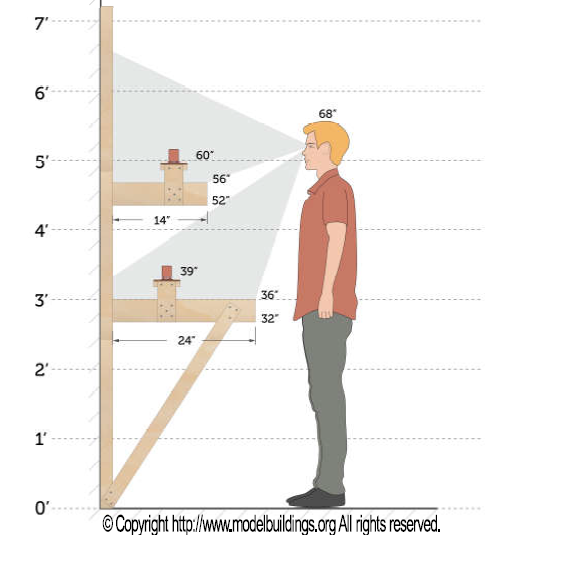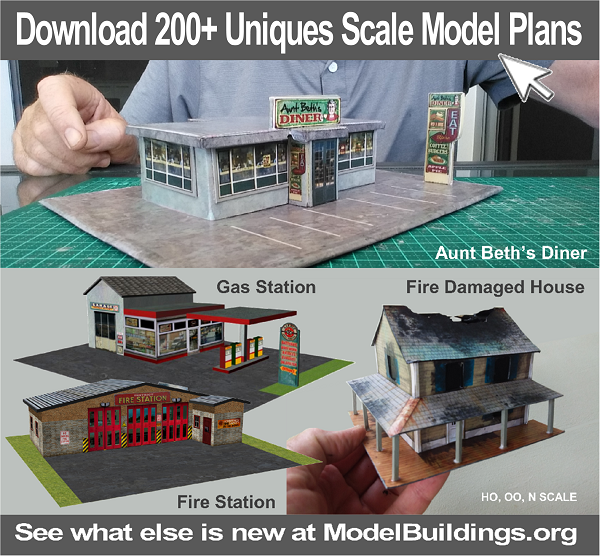What’s The Right Benchwork Height For Operating OO Gauge, HO Scale, and N scale Model Trains?
How high you make your model railroad benchwork from the floor is really a matter of personal preference and how tall you are. So, how practical is it for the benchwork height to be the same for someone who is 5ft 3 inches tall as compared to a 6ft 3 inch railroader? If you will be the only operator, then making the benchwork height specifically to suit your own requirements is a worthy consideration. If other operators will be operating train on the same layout, then something more universally acceptable will probably be the way to go. © Copyright http://www.modelbuildings.org All rights reserved.
The key considerations will include comfort, accessibility, and viewing angles… but overall the height must be a practical as you won’t want to work on your layout with your arms elevated all the time.
If you have a bottom staging level then you could perhaps set it at 2 ft, with the main level set somewhere between 36” – 40”, and the upper level (if you have one somewhere between 50” – 54″ depending on your height and what you personally prefer. Many with a onelevel layout choose a height of 45” – 48” from the floor, and some are in the 50” – 54” range, so opinions are varied.
Think about whether you will be standing or seated at your layout. How will your back cope with constant bending over or stretching? Do you want to look down at your layout, or would you prefer things to be at eye level? How far will you need to reach to retrieve a derailed wagon? Will you need to crawl underneath the layout to operate from a pit, or to work on the wiring? These are all factors worth considering. As a rule of thumb; a narrow shelf layout is generally viewed around eye level, whereas a most other layouts are viewed from above.
Planning For Layout Expansion
The world of model trains is vast. Many people who are modelers today started out with a toy train Christmas gift as a child. Trains and Christmas seem to have been destined to be together even before development of the electric train. A locomotive or train has been a favorite gift for a boy since the first train chugged down the track. Some youngsters put the train aside as they grow older, but a surprising number go back to the hobby with passion at some later point in life.
Creating your own model railroad can be a real thrill. The hobby truly has something for everyone. Model building, art, electronics, mechanics, all of these can be found somewhere on your railroad layout. Even if you start out with a boxed starter train set, at some point you might decide to take your railway modeling to the next level, so planning for a larger layout should be on the cards.
Model Trains Need Scenery To Have A Purpose
Scenery is what distinguishes a model railroad from a toy train set. Scenery is all about the setting and telling a story about the trains. Scenery is how you choose to showcase what you’ve created. It is a product of your own skills and imagination, and there’s nothing more satisfying to look over your small world and think proudly, “I created this!” Your powers of observation will be exercised and honed as you study the techniques and become aware of all of the tiny details that surround you in the real world and try to create them in miniature.
A model train going around and around an oval track is just that. It is like a cat chasing its tail Whereas trains that stop at stations and pass through scenery to destinations have a purpose for operating. Scenery helps to explain why a train is where it is, and helps tells a story of the railway line it operates on, and gives a



